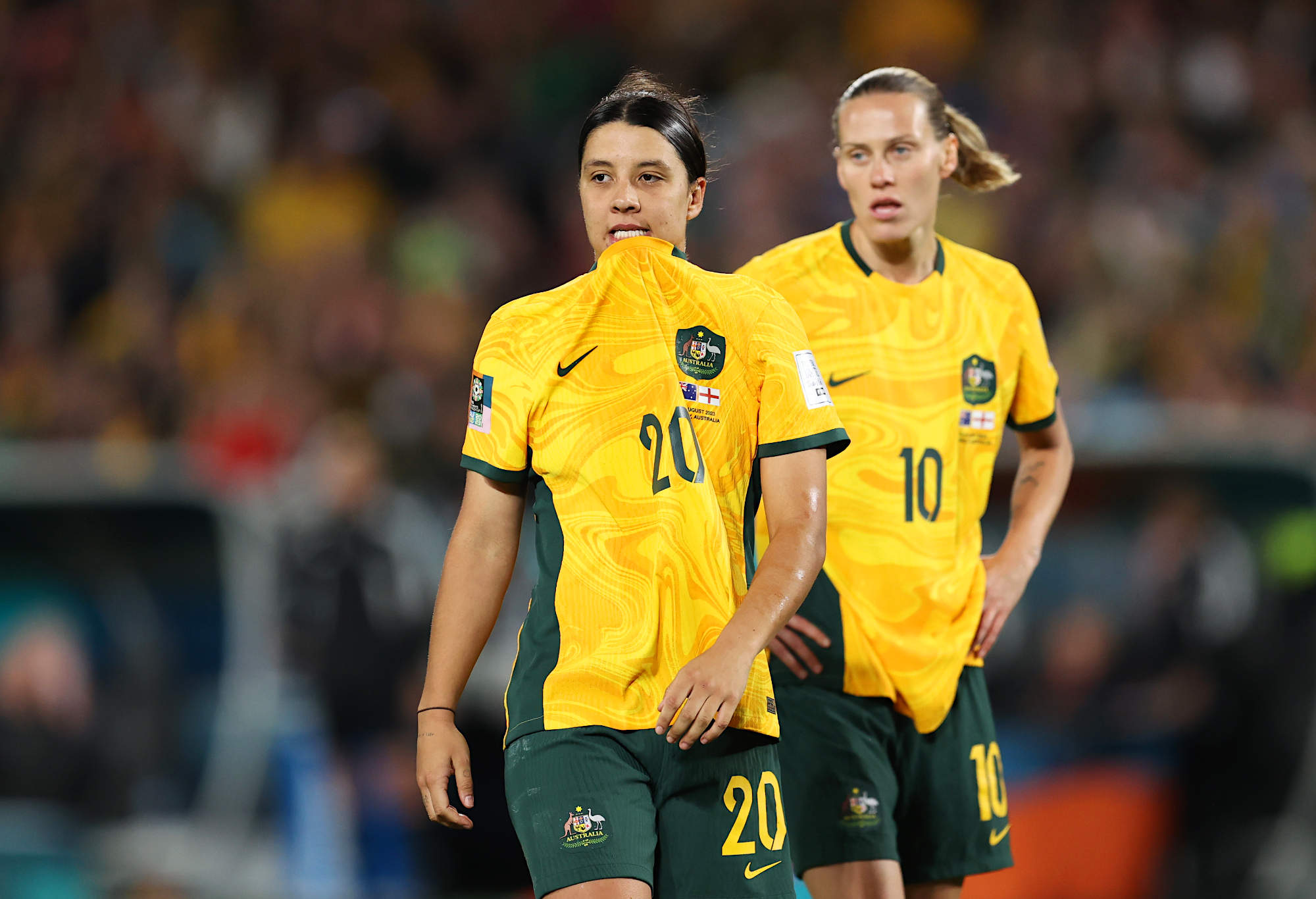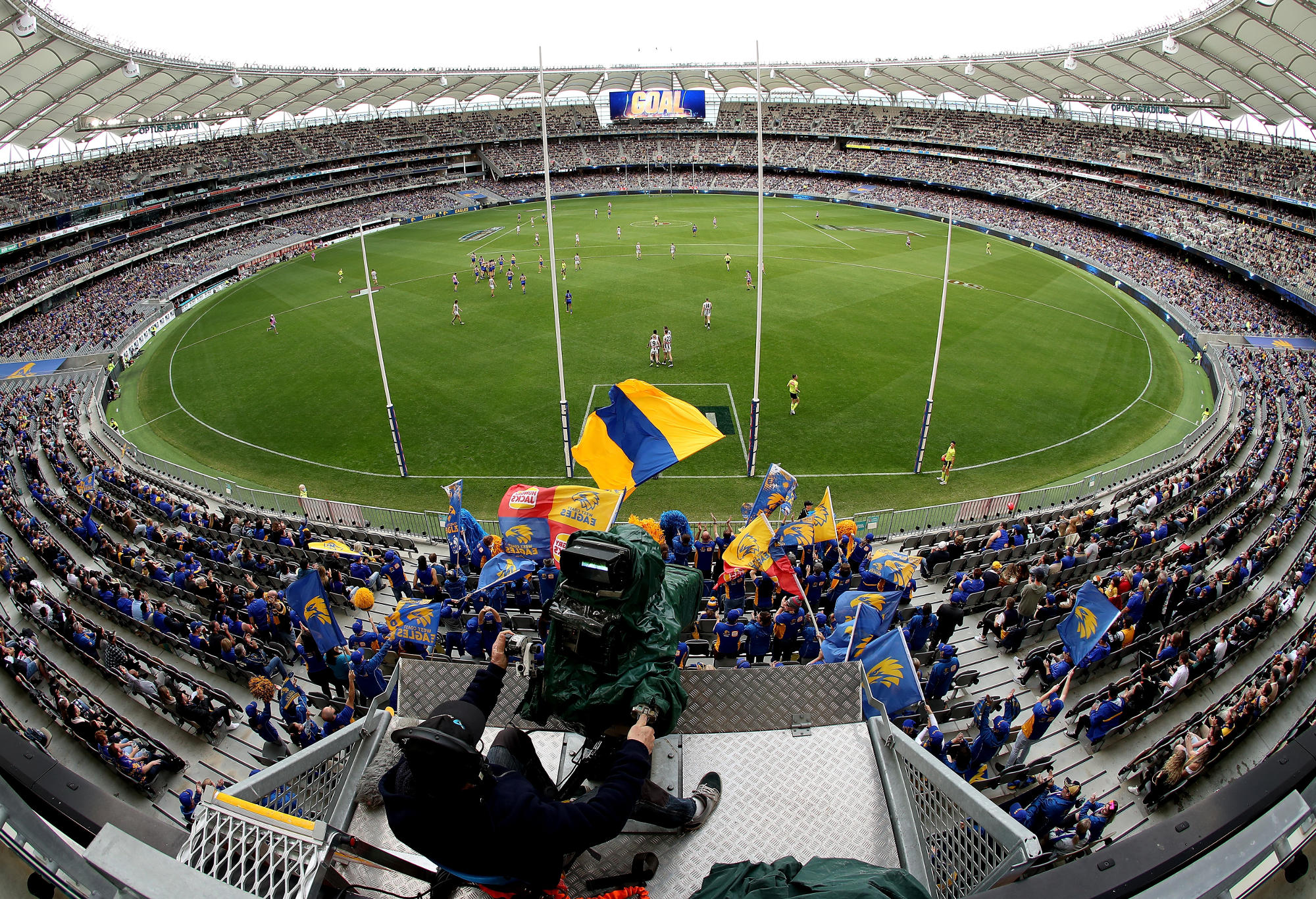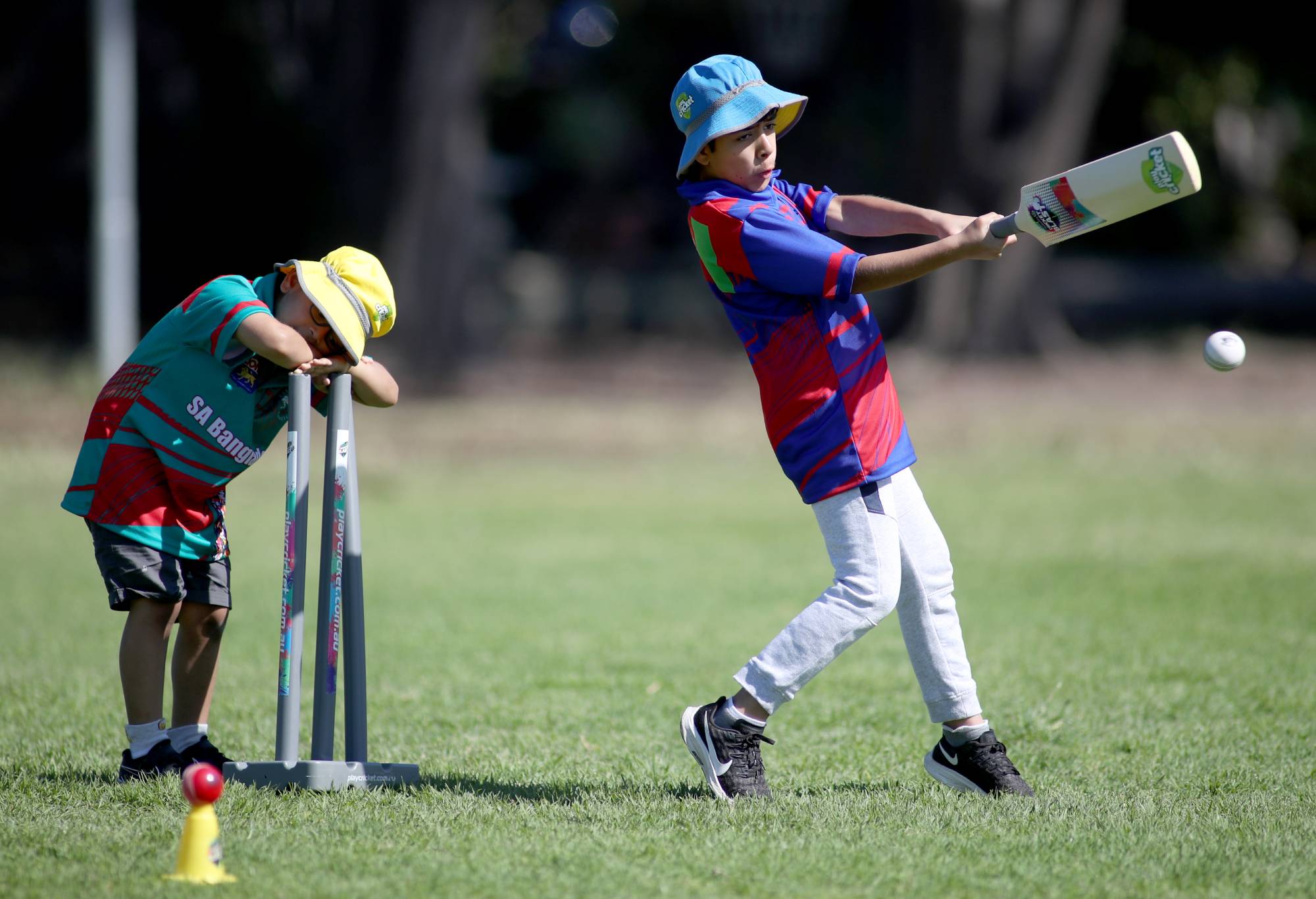Australian governments of all levels should apply equity considerations when funding sport and recreation needs, in line with 2022 data which indicates that football has 1.25 million participants, basketball 995,000, Australian Rules 620,000, rugby league 198,000, rugby union 146,000, and field hockey 198,000.
But, as sports funding trends stand, something needs to give if Australia is to more adequately address grassroots sport.
While sports such as football have high participation numbers on overused fields (as evident most in Sydney), the increasing role played by state (and federal) governments to support elite sport, major events and stadium construction, ultimately diminishes their ability to help local governments meet their local parks and infrastructure needs.

(Photo by Brendon Thorne/Getty Images)
Whereas the ABS indicates that local government provided around 50 per cent of the total $2.1 billion spent on sport and recreation during the 2000-01 financial year, research by ABC journalists suggests its proportion of funding had increased to 65 per cent of the $11.5 billion of public funds provided in 2021.
Have local governments been reasonably fair to the different sports? Only sports insiders involved in community sports can answer this question, yet 2008 data from the Southern Sydney Regional Organisation of Councils (12 local councils) indicates 1 football field for every 4,000 people, 1 cricket pitch per 5,300 people, 1 rugby league/union field per 17,000 people, 1 Baseball/softball diamond per 22,800 people, 1 shared use field per 41,500 people, 1 hockey field per 68,000 people, 1 Australian Rules field per 68,000 people, and 1 athletics track per 76,000 people.
But today local governments are expected to uphold grassroots sports infrastructure needs despite their own revenue struggles to meet increasing community expectations at a time when grants from the federal government alone have declined from 1 per cent of Commonwealth tax revenue under the Hawke government to 0.55 per cent.
At the same time, state governments have spent considerable sums on world class stadiums to help the major sporting codes and events, despite the contribution from state and territory government to total sport and recreation public funding declining from 40 per cent in 2000-01 to 30 per cent by 2021 if the ABC research is to be believed.

Perth Stadium. (Photo by Paul Kane/Getty Images)
Based on 2023 dollars that allow for inflation, the final cost to state governments for recent stadiums include $2.2 billion for the Perth Stadium, $980 million for the Sydney Football Stadium, $775 million for the reconstructed Adelaide Oval, $402 million for the Western Sydney stadium, $380 million for the Melbourne Rectangular Stadium and $262 for an upgraded Kardinia Park (Geelong).
For football fans, knowing that existing fields cannot cope with growing numbers of participants (especially Sydney), some resent the assistance directed by state and federal governments to the Australian Football league (AFL) and National Rugby league (NRL), despite such leagues receiving hundreds of millions of dollars in revenue from television rights deals, sponsorship and high attendances.
Although expenditure on modern stadiums helps all football codes host big club and international matches, one critical study points to the AFL and NRL securing $192 million (15 projects) and $124 million (14 projects) for high-performance centres from 2010 to 2019.
The problems confronting grassroots sports and need for urgent action were evident in a 2018 report commissioned by the Northern Sydney Region Organisation of Councils, in line with the reality that local councils do not have the income to fund land acquisition.
Suggested policies included:
- Urging the construction of an equivalent 78 extra rectangular sport fields to meet demand by 2026 (and 120 rectangular fields by 2026), using school grounds, upgrading lighting around existing fields, and installing more multi-purpose synthetic fields to address the shortfall, although this would only increase playing space by 22 per cent by 2026.
- Converting grass fields to multi-purpose synthetic surfaces so they can be used by a range of sporting codes; and transforming park space from one sport to other use, as suggested by the idea that Warringah Golf Course could be turned into playing fields.
- By 2021, Football NSW was heavily promoting the use of synthetic fields with 35 built since 2016 to extend playing time to over 60 hours per field compared to 20-25 hours for a natural turf field which is subject to wear and tear and a higher maintenance and water use cost.

(Photo by Kelly Barnes/Getty Images)
The potential for football codes to share fields is illustrated by Brisbane’s Mitchelton Soccer Club (northern Brisbane) playing on an artificial field (costing $1.5 million) since 2019 with both FIFA and rugby union certification.
But the problems confronting grassroots sport in terms of a shortage of playing fields and sports facilities cannot go away without greater assistance from state and/or federal governments in terms of the funding mix between elite and grassroots sport.
With total Australian government spending on sport and recreation comparing well with most OECD countries at 1.16 per cent as of 2019, it would be unrealistic to expect governments to simply increase spending at a time of a major cost of living crisis as the country increasingly struggles to meet old and new policy needs.
The September 2021 publication Social infrastructure in Melbourne’s growth areas already shows that the Victorian Government was spending an average $50,000, and local governments $38,000, on infrastructure to support each new home in Melbourne’s growth areas whereas developer contributions averaged around $23,000 for each home, a reality that helps explain the large gap in funding which results in a lack of sporting infrastructure for new residents.
The 2021 National State of the Assets Report also indicated the fiscal difficulties faced by Australia’s local governments with their park and recreation assets needing urgent repair having a replacement cost of $1.3 billion, those with poor function $1.1 billion and those with poor capacity $1.4 billion, yet these amounts are dwarfed by the $51 billion needed to address all other poor quality infrastructure with up to $138 billion needed to replace infrastructure in a fair condition.

Crowds at the MCG. (Photo by Quinn Rooney/Getty Images)
In such a climate, a 2022 ABC report noted how less sporting infrastructure leads to lower participation rates and poorer health outcomes in new suburbs, while the closure of existing infrastructure – such as swimming pools in Western Sydney because of high rebuilding costs – can also lead to overcrowding and strain on remaining facilities.
And with key players supporting the NSW Productivity Commission’s recent push for greater building heights and denser development even in Sydney’s most affluent suburbs, despite opponents noting that the inner ring of Sydney is already much denser than further west, participation opportunities can only worsen as the population increases in line with the existing number of fields.
We can only hope that state and federal governments adopt policies that can more adequately balance elite and grassroots sport in terms of funding, perhaps boosted by a national lottery that funds sport as the United Kingdom does (although it is worth noting that the latter has one of the lowest proportions of total government spending on sport and recreation at 0.42 per cent).
As it stands, however, state governments continue to target big events and fund large stadiums with the Queensland government to rebuild the GABBA for the 2032 Olympic Games (50,000 capacity) at a present cost of $2.7 billion, with the Victorian government likely to fund much of the cost of rebuilding the MCG’s southern stand having provided $500 million assistance to the AFL in 2018 (including $225 million to the Docklands stadium and precinct).
While the 2022-23 Victorian Budget noted that it had spent $1.2 billion on community sport and recreation infrastructure since 2014, the upgrades to the Melbourne Park precinct alone from 2010 to end of 2021 cost $970 million to improve related stadiums and facilities in a bid to secure the Australian Open tennis for years to come.

The Gabba. (Photo by Kelly Defina/Getty Images)
Quite simply, there are only few examples of the prosperous sporting leagues paying a considerable proportion of stadium upgrades, as was the case when private sector paid $857 million ($2023) to build Docklands and contributed $565 million towards the total $688 million cost of the MCG’s new northern stand.
In the case of Victoria, the desire to please elite sport means less resources for grassroots sport. For example, while the 2019-20 Victorian Budget provided $21.6 million to upgrade community soccer facilities across Victoria, the Victorian government in May 2021 also provided $101 million to La Trobe University’s Sports Park (Bundoora) to include a world-class training base for Football Australia to train its national women’s squads there (opened 3 July 2023), as well as the State Rugby Centre of Excellence to help elite rugby union teams and players.
And while the federal government provided an important $200 million to women’s sport to provide better sporting facilities following the 2023 World Cup, they have also provided $126 million (2023 dollars) to help build the Nth Queensland stadium and $240 million for the planned Hobart stadium to ease the burden on the Tasmanian government, who committed $375 million as the AFL demanded a new stadium to enable a 19th AFL team.
But while the Australian Olympic Committee chair Matt Carroll argued in 2023 that Australian sport faced a $2 billion shortfall over the next decade, and the major sporting leagues and events continue to call for assistance from state governments who compete with each to other for major events, it remains to be seen whether the federal and state governments prove capable of doing much more to help grassroots sport.

































































































